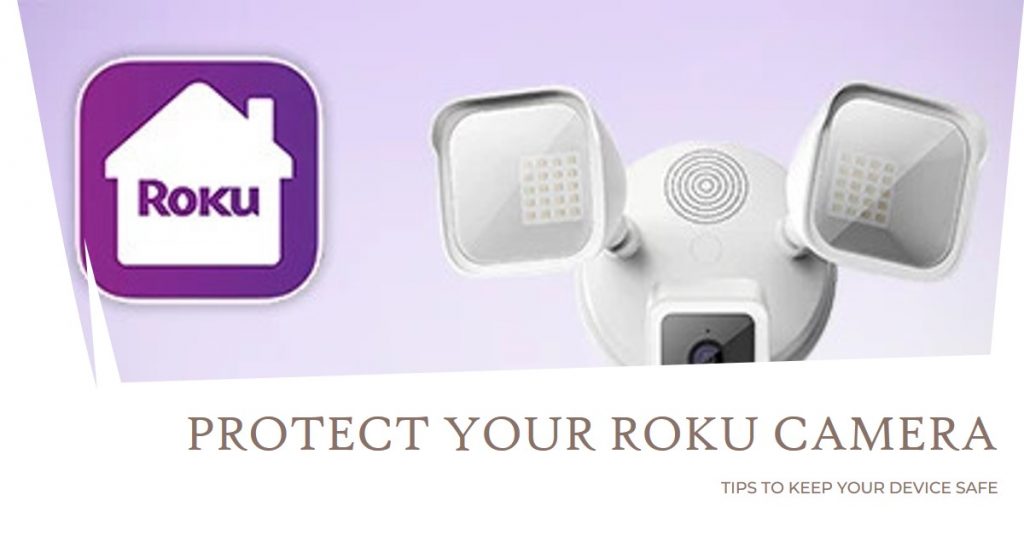With the rise of smart home devices, Roku cameras have become increasingly popular, offering convenience and enhanced security to households. But as with any internet-connected device, there are risks of hacking. Protecting your smart camera is more important than ever to safeguard your privacy and keep your home secure. In this guide, we will discuss practical steps to secure your Roku camera and explain why doing so is essential.

Key Takeaways
- Regularly update passwords and enable two-factor authentication.
- Keep your firmware up to date to avoid known vulnerabilities.
- Use VPNs and antivirus software for an additional security layer.
- Monitor your camera for any unusual activity and act quickly if needed.
Can Roku Cameras Be Hacked? Understanding the Risk
Many users wonder, Can Roku cameras be hacked? The unfortunate answer is that, like most internet-connected devices, Roku cameras are not immune to attacks. Smart camera vulnerabilities often come from weak network security, outdated software, or even phishing tactics used to steal user credentials.
A noteworthy case in the realm of smart camera hacking involved incidents where unsecured cameras allowed intruders to access live footage. The root cause? Simple, easily guessed passwords and lack of two-factor authentication. Security expert Bruce Schneier once said, “Security is a process, not a product,” highlighting that keeping devices secure requires continuous effort.
How Hackers Target Smart Cameras
Hackers have multiple methods to breach smart camera systems:
- Weak Passwords: Many people use simple passwords that are easy to guess, making cameras an easy target.
- Phishing Attacks: Hackers send fake emails or messages to trick users into revealing credentials.
- Unsecured Networks: If your Wi-Fi network isn’t encrypted, it becomes a gateway for hackers.
- Outdated Firmware: Older software often contains vulnerabilities that are patched in newer updates.
Data encryption and securing your account credentials are vital. Hackers also exploit IoT device vulnerabilities to infiltrate home networks, which is why it’s essential to stay updated on the latest security practices.
Signs Your Roku Camera May Be Compromised
Detecting a potential hack can save you from significant trouble. Here are some indicators that your Roku camera might be compromised:
- Unusual Camera Activity: The camera moves on its own, or the status light flashes when not in use.
- Deleted or Altered Footage: If your saved videos disappear or appear manipulated, it could be a sign of unauthorized access.
- Account Changes: Receiving notifications about unapproved logins or settings alterations can signal a breach.
Monitoring your device and checking for unusual behavior regularly can help you act swiftly if you notice something off.
Step-by-Step Guide to Secure Your Roku Camera
Let’s dive into the specifics of securing your Roku camera against hacking attempts.
Step 1: Change Your Password Regularly
Creating a strong and unique password for your Roku camera is a fundamental security measure. Avoid using easily guessable passwords like “123456” or “password.” Instead, use a combination of uppercase letters, lowercase letters, numbers, and special characters.
- Tips for a Strong Password: Use at least 12 characters, incorporate symbols, and avoid personal information like birthdates.
- Password Management Tools: Consider using a password manager to generate and store your credentials securely.
Step 2: Enable Two-Factor Authentication (2FA)
Two-factor authentication (2FA) adds an extra layer of security by requiring a second form of verification, like a text message or an authentication app.
- How to Set Up 2FA: Go to your Roku account settings and follow the prompts to enable this feature.
- Benefit: Even if someone steals your password, they won’t be able to access your account without the second factor.
Step 3: Update Your Firmware Frequently
Outdated firmware is a common entry point for hackers. Roku regularly releases updates to fix vulnerabilities and improve device performance.
- How to Check for Updates: Open the Roku app, go to your device settings, and select “Check for updates.”
- Why It Matters: A 2022 study by the cybersecurity firm Symantec found that 56% of IoT attacks exploit outdated software.
Step 4: Secure Your Home Wi-Fi Network
Your camera is only as secure as your home network. Wi-Fi encryption and a strong network password are crucial for preventing unauthorized access.
- Secure Your Router: Change the default login credentials, disable remote management, and ensure your router firmware is up to date.
- Encryption Settings: Use WPA3, the most secure Wi-Fi encryption standard currently available.
Step 5: Adjust Camera Settings for Maximum Security
Disabling unnecessary features can reduce the risk of hacking. For example, if you don’t need remote access to your camera, consider turning it off.
- Privacy Zones: Configure privacy zones to restrict what the camera monitors.
- Data Sharing: Review what data your camera shares and disable any non-essential features.
Using Security Software and Devices for Extra Protection
Apart from securing your Roku camera, investing in additional security software can be beneficial.
- Antivirus Software: Protects your devices from malware that hackers might use to gain access.
- VPNs: A virtual private network can encrypt your internet traffic, making it harder for hackers to intercept.
- Smart Hubs: Devices like Google Nest or Amazon Echo offer added layers of security for connected home systems.
What to Do If You Suspect a Security Breach
Act quickly if you think your camera has been compromised.
- Disconnect the Camera: Immediately unplug or disable it.
- Reset the Device: Perform a factory reset to erase any potentially harmful software.
- Change All Passwords: Update passwords for your camera, Wi-Fi, and Roku account.
- Report the Incident: Notify Roku support and consider contacting local law enforcement.
The Future of Smart Camera Security
As technology advances, new solutions for securing smart devices are emerging. Artificial Intelligence (AI) and machine learning are being integrated into smart cameras to detect suspicious activity proactively. In addition, manufacturers are developing more robust encryption protocols to protect user data.
Staying informed about security trends and continuously updating your devices can help you stay ahead of potential threats.
By following these steps, you can enjoy the convenience of your Roku camera without sacrificing your privacy or security.
Also Check:
- Can Roku Cameras Be Hacked? What You Need to Know to Stay Safe
- Airpods Max Accessories: 5 AirPods Max Accessories That Every Audiophile Should Own
- Sony 83 Inch BRAVIA XR A80L OLED TV Review: A Stunning Display Built for…
- How to Turn On Noise Cancelling on Beats Studio Pro
- How to Pair Beats Studio Pro: A Step-by-Step Guide for Seamless Connectivity
